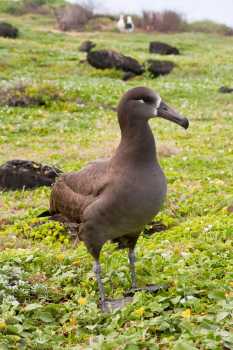UPDATE: Abstracts now available (click here).
An International Conference on Island Evolution, Ecology, and Conservation (Island Biology 2014) will be held at the University of Hawaii at Manoa, Honolulu, Oahu, Hawaii, USA over 7-11 July 2014.
A draft programme for the conference is now available from which the following presentations on seabirds along with their senior authors have been extracted. Other papers will be given on island restoration and on the effects and removal of introduced predators.
Elsa Bonnaud: Unexpected differences of cat predation on close islands: how being efficient to better preserve a vulnerable seabird? [Balearic Shearwater Puffinus mauretanicus?]
Karen Courtot: Scenarios for black-footed albatross colony establishment on the main Hawaiian Islands [Phoebastria nigripes]
Kazuto Kawakami: The recent evidence on the distribution of the seriously threatened Bryan’s Shearwater in the Bonin Islands, subtropical Japan (poster) [Puffinus bryani]
Steve Sawyer: The establishment of novel surface- and burrow-nesting pelagic seabird colonies in New Zealand and Hawaii using acoustic attraction and predator fencing
David Towns: Is restoration of seabird islands reconstructing the ambiguous?
Dena Spatz: Globally threatened seabirds and island conservation opportunities
Eric VanderWerf: Increase in Wedge-tailed Shearwaters and changes in soil nutrients following construction of a predator-proof fence at Kaena Point, Hawaii [Puffinus pacificus]
Adam Vorsino: Combining demographic and geographic models to assess the current and future health of Newell’s Shearwater and Hawaiian Petrel [Puffinus newelli & Pterodroma sandwichensis]

A Black-footed Albatross visits Kaena Point, Oahu, Hawaii
Photograph by Lindsay Young
The conference is intended to “be the first of a regular series of meetings that will be held every four years, on islands around the world, at which island biologists can come together, share insights, and develop collaborations that will accelerate the pace and effectiveness of island research and conservation.”
John Cooper ACAP Information Officer, 08 June 2014, updated 24 June 2014

 English
English  Français
Français  Español
Español